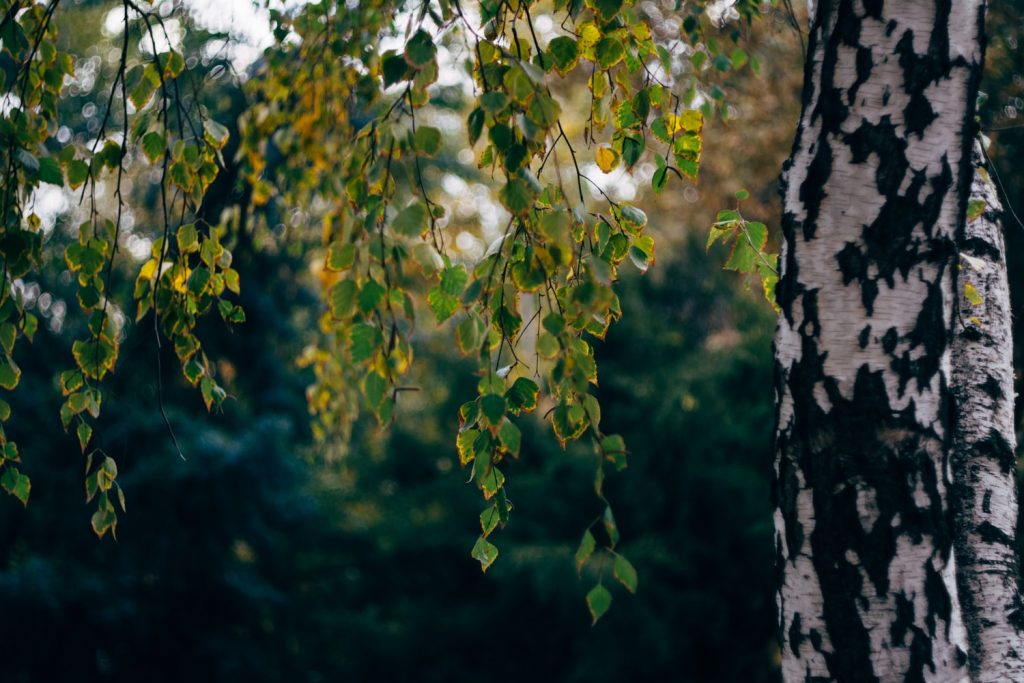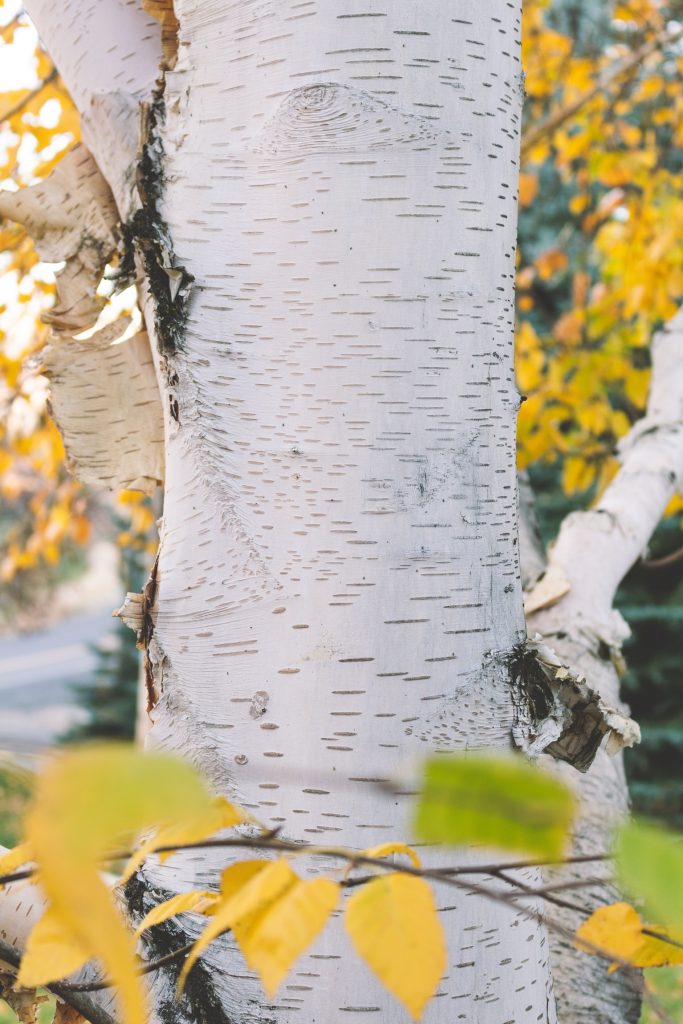Uses
Can thrive in any soil, used as a nurse tree to fix nitrogen into the soil. In the past it was a cheap wood as it grew prolifically, so it was used for bobbins, broom handles, boat building and roofing. The bark can be peeled thinly to make oiled paper and is also used to make a pink dye. Birch tar oil was extracted from the bark and used to dress leather, particularly in Russia. The Russian books bound in leather would never get mouldy, as the oil has the property of keeping away insects and preventing gnat bites, when smeared on the hands. The sap is used for birch wine.

Myths and legends
Traditionally seen as the “Lady of the Woods”, the tree is feminine, constant and friendly, an enchanting tree.
An old welsh custom was for a man to give a girl a birch garland to show he loved her. If she loved him back, she returned the gesture.
The birch rods have traditionally been used to beat the boundaries of the parish-called “beating the bounds” and for cleansing the old year away. They have also been used since Roman times for caning people, probably based in the belief that the birch is said to be able to ward off evil spirits.

Medicinally
This information is purely for interest, any use of this as a medicine needs to be taken under the instruction and guidance of a registered herbal practitioner.
The oil is used for skin affections, especially eczema. Birch tea made from the young leaves and shoots is reputedly good for kidney stones, urinary infections and rheumatism. It has purging qualities.
Disclaimer- The author accepts no liability for anyone using the medicines above. This post is not intended to provide diagnosis, treatment or medical advice. Any mention of medicinal uses are for informational purposes only. The use of any herb or derivative is entirely at the reader’s own risk. The author of this post cannot be held liable for anyone using these medicines. It is strongly advised that any usage is in consultation with a registered herbalist and/or qualified doctor.
This is a great site with clear images for easy identification:
« Back to blog page